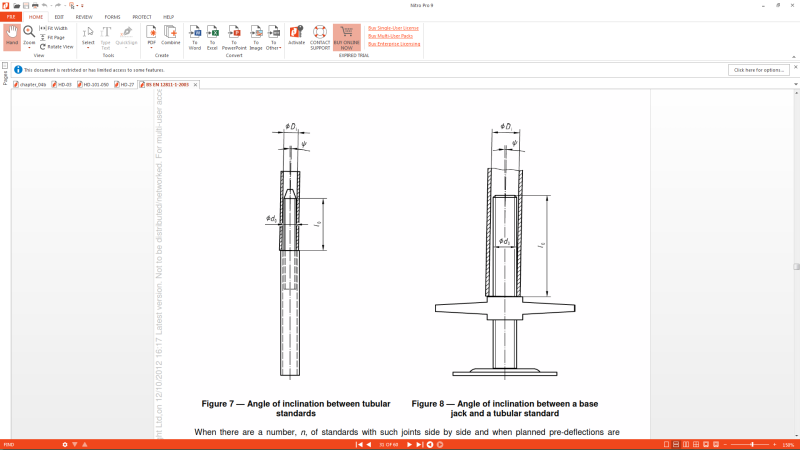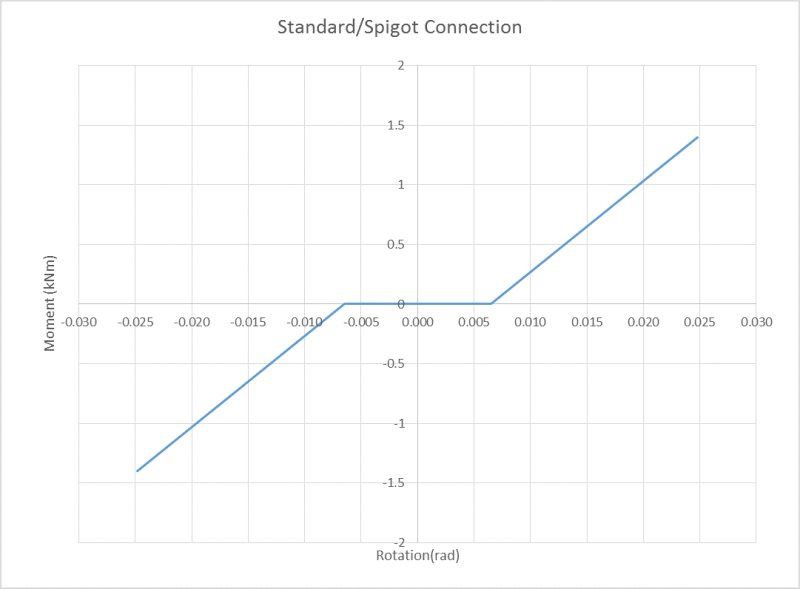MarkR16
Mechanical
- Mar 4, 2016
- 1
Hi all,
I'm try to model a spigot to standard connection.
What I would like to end up with is a function which describes the moment rotation curve of the connection.
What I have so far:
The initial gap, Which I calculate with theata = atan (di-do)/length (EN 12811-1)
The ultimate bending moment as the weakest of the two components (spigot/standard). Mu,Rd= fu*Wpl (Eurocode 9)
Finally the rotational stiffness of the connection is the combination of both components in series. ktot = (GJ1/L)+(GJ2/L) (Wikipedia)
I think my approach is right but I am unsure. Any advice on how to solve this problem would be much appreciated.
Quick Examples below


I'm try to model a spigot to standard connection.
What I would like to end up with is a function which describes the moment rotation curve of the connection.
What I have so far:
The initial gap, Which I calculate with theata = atan (di-do)/length (EN 12811-1)
The ultimate bending moment as the weakest of the two components (spigot/standard). Mu,Rd= fu*Wpl (Eurocode 9)
Finally the rotational stiffness of the connection is the combination of both components in series. ktot = (GJ1/L)+(GJ2/L) (Wikipedia)
I think my approach is right but I am unsure. Any advice on how to solve this problem would be much appreciated.
Quick Examples below


